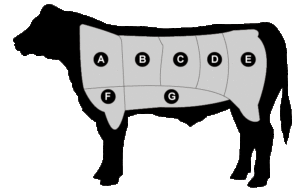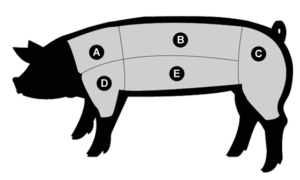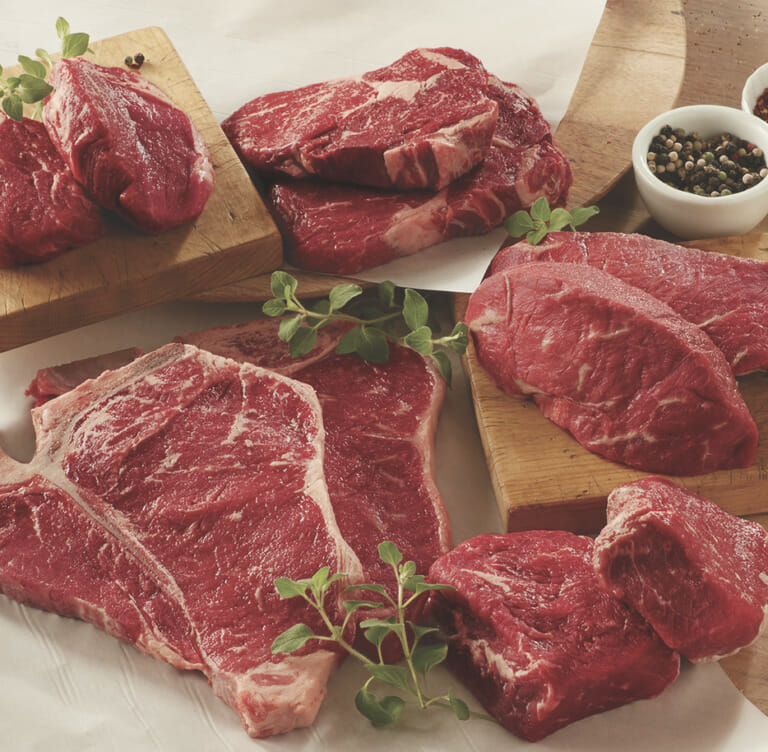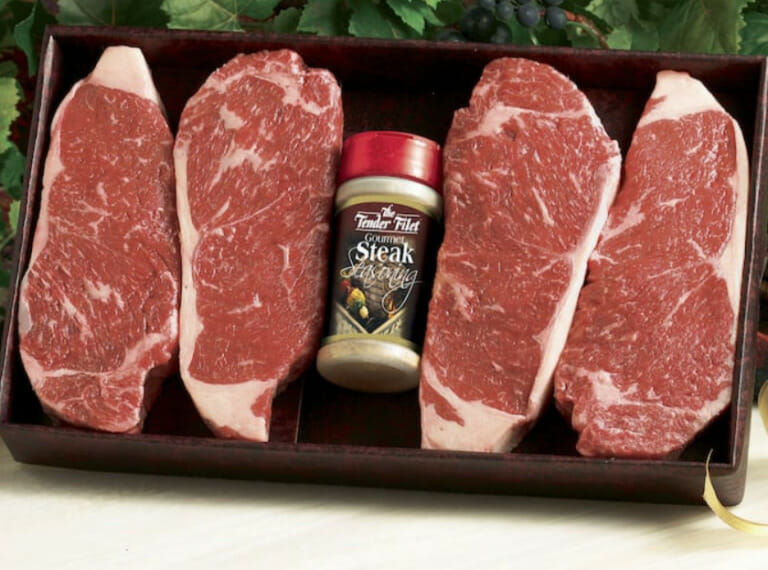Meat General Tips
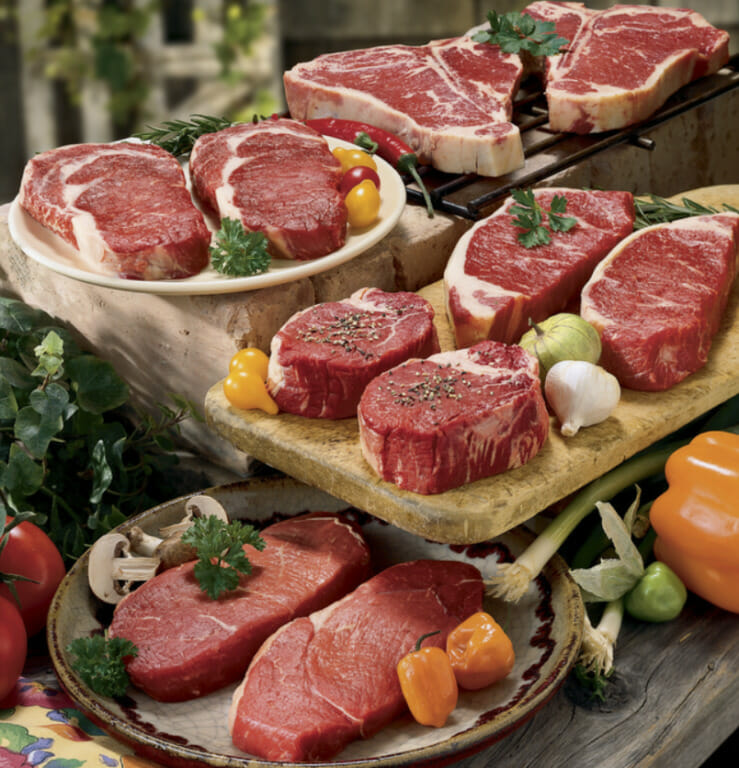
Safe Handling Instructions:
- Keep refrigerated or frozen.
- Thaw in refrigerator.
- Keep raw meat and poultry separate from other foods. Wash working surfaces (including cutting boards), utensils and hands after touching raw meat or poultry.
- Cook thoroughly.
- Keep hot foods hot.
- Refrigerate leftovers immediately or discard.
- All pre-cooked foods, sauces, ground meats, poultry and seafood must be cooked to an internal temperature of at least 165° F.
- Never serve ground meats medium-rare, rare or raw.
Larger cuts of meat, like Prime Rib Roast and Chateaubriand, are best roasted in the oven. Steaks, ribs, patties and other smaller cuts are best grilled or broiled.
- Grilling: Always preheat your grill or let the charcoals acquire a thin coating of white ash and red glow before putting meat on the grill. The chart below offers a general guide for grilling times. However, because conditions may vary—i.e., meat weight, heat, placement on grill, weather—cooking times will vary. You must keep a close eye on your foods as they cook. Remember, bone-in cuts require longer cooking time than boneless.
- Oven Broiling: Always preheat the oven (set oven control to “broil”) and use a two-part broiler pan. Place the meat 2-3″ away from the heat. Leave the oven door ajar while broiling.
How to Tell When It’s Done:
- Steaks and chops: Push gently with a spoon or the handle (never the tines) of a fork. Rare meat will feel soft; well-done is firmer to the touch.
- Poultry: Tug the bird’s wing. When it can be easily moved in the socket, it’s ready.
- Roasts: Use an accurate meat thermometer.
- NEVER use a fork to test for doneness! When meat is pierced during cooking, precious natural juices are lost. Use a sturdy pair of kitchen tongs to turn meat or remove it from the grill.
Cooking Without Thawing:
Although it’s always best to thaw meat before cooking, you can go directly from “freezer to flame” without thawing. However, you must cook meats longer, at lower temperatures.
- To Broil: Place meat a little further away from the heat, and cook one-half to one-third longer on each side.
- To Fry, Pan Broil or Braise: Sear as usual, then lower the temperature and increase cooking time slightly.
- To Roast: Set oven at 300-325° F and allow about 10-15 minutes per pound of meat.
A Note About Microwave Cooking:
Although some of our meats can be prepared in the microwave, red meat roasts, steaks and chops are best when prepared in the oven or broiler, or on the grill. If you must prepare meats in the microwave, a meat thermometer should be used to insure that meat is thoroughly heated to an internal temperature of at least 165° F. See specific product directions on the following pages to see if microwave cooking is suggested.
